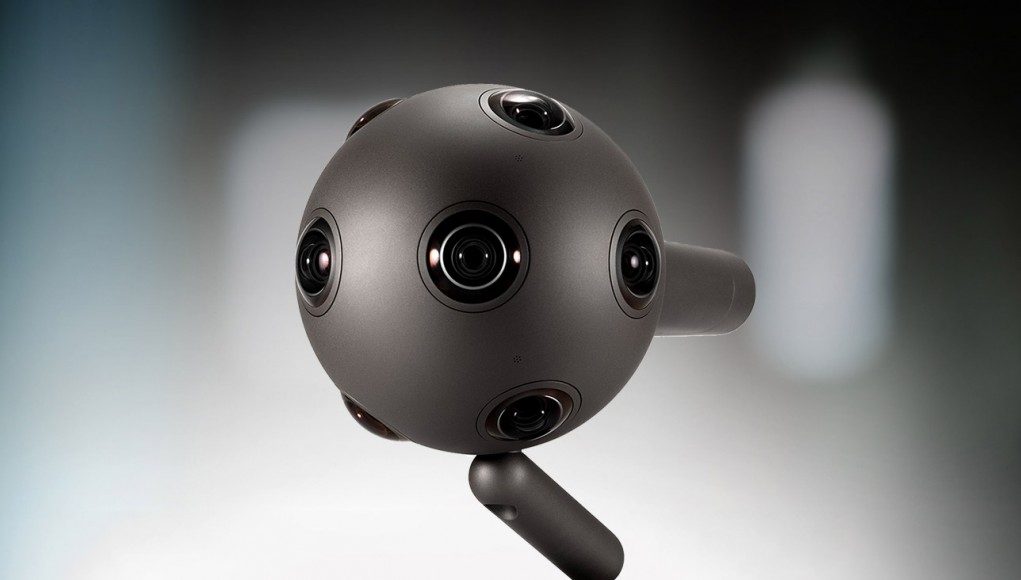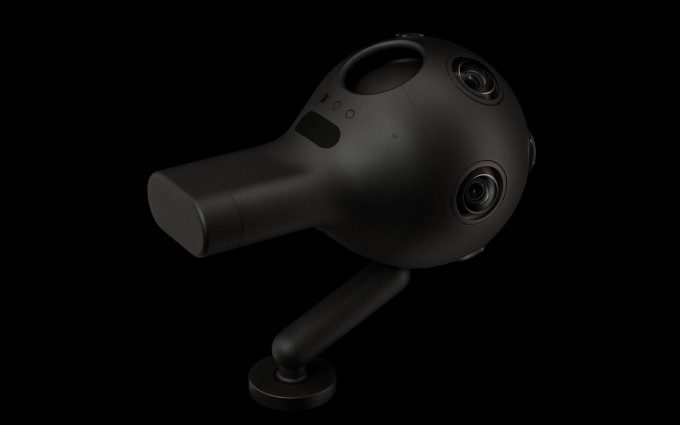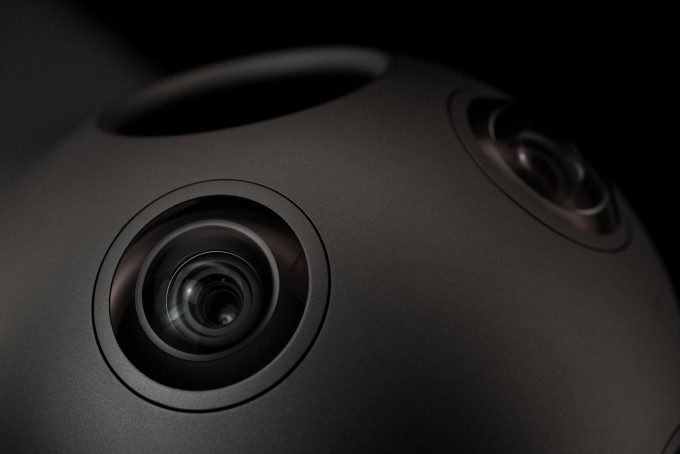From Nokia’s Ozo launch event in Los Angeles new info about the company’s VR camera has emerged. In addition to announcing a launch window and opening pre-orders, Nokia has also revealed Ozo’s full specifications which confirm two sore posts for the professional-focused device.
Amidst the list of full specs and new info released are answers to some questions we’ve had since the company announced Ozo back in July.
See Also: Nokia OZO 360 Camera Selling for $60,000 – Pre-orders Now Available
For one, the VR camera weighs 9.3 pounds—just a little more than a gallon of milk—which means the device falls very easily into the world of ‘handheld’ when it comes to professional cameras. Second, the ‘Media Module’ has a 500GB SSD which can record for around 45 minutes continuously. The Module can be swapped out of the camera in place of another to keep production moving along, and each module has a USB 3.0 port to transfer the captured data. Optionally, filmmakers can hook Ozo up to external storage devices for extended recording time.
But there are two specs that stick out as being potential sore spots for a VR camera, especially one with a $60,000 price tag.
30 Frames Per Second
Sticking out like a sore-thumb is Ozo’s 30 FPS recording rate. It’s the opinion of many at this time that 60 FPS capture is the bare minimum for convincing immersion in VR. Granted, I would be willing to bet that the global shutter sync across all the cameras means that Ozo’s 30 FPS capture will stand up very well compared even to rigs shooting at 60 FPS without proper synchronization of the cameras (as we see with many GoPro-based VR camera rigs).
See Also: Exclusive – Nokia’s $60,000 VR Camera Goes on a Drone Test Flight
Although Ozo only shoots at 30 FPS, actual headtracking during playback will remain at the native tracking rate of the headset (60 FPS on Gear VR, or 90 FPS on Rift/Vive, for instance), as the video framerate is independent of the device’s headtracking.
(Mostly) Stereoscopic
Another possible sore point from the specs confirms a previous suspicion; Ozo shoots 360 degree stereoscopic video, except in a portion of the scene in the ‘back’ of the camera (the tail end). The company writes in the Ozo FAQ that the “vast majority of the view is natively stereoscopic,” but notes that a “small area behind the camera is monoscopic.”
In practice, the monoscopic region blends in seamlessly with the rest of the shot, and you might not notice the lack of depth so long as there are no near-field objects emphasizing the missing parallax.
For filmed experiences where the viewer is intended to be seated, this shouldn’t pose much of a problem as viewers won’t spend extended periods of time looking directly behind them (unless they’ve got a swivel chair). However, filmakers may have to get creative about how they minimize use of that area if they plan an experience that makes use of the full 360 degree stage.
Nokia Ozo Full Specifications
Expand the sections below for a look at Ozo’s detailed specifications.
Sensor and Lens Details
| Presence Capture | Spherical and Stereoscopic Video capture with Spatial Audio Array |
| Video Sensor Type | Progressive Scan with Global Shutter |
| Video Sensor Array | Eight, synchronised, 2K x 2K sensors |
| Video Area Coverage | Full-spherical, 360 x 180 degrees |
| Min Imaging Distance | 0.5m / 20″ (spherical video coverage) |
| Stereoscopic Coverage | Centerline +/- 130(h), +/- 65(v) degrees |
| Lens Interoptic Distance | Effective max. 86 mm / 3.4″ |
| Lens Angle of View | 195 degrees per lens |
| Relative Aperture | f/2.4 |
Video and Audio
| Video Dynamic Range | 60 dB / 10 stops |
| Base Color Temperature | 5,000 degrees Kelvin |
| Base Sensitivity | ISO 400 |
| Audio Sensor Type | Omnidirectional, solid state |
| Audio Area Coverage | Full-spherical, 360 x 360 degrees |
| Audio Dynamic Range | 64dB S/N, 120dB max SPL |
Capture and Output
| Master File Format | MOV wrapped OZO Virtual Reality with 8Ch raw Video and 8Ch PCM Audio |
| Video Compression | Wavelet-based raw |
| Media Module | 500GB, Solid State Media |
| Record Duration | 45 min per Media Module |
| Program Output | 3G-SDI SMPTE 242M, DIN connector |
| Capture Frame Rate | 30.00 fps |
| Cooling System | Passive (fanless) design |
| Battery Pack | Rechargeable Lithium Ion |
| Power Consumption | 12V DC, approx 30W in record mode |
Control and Monitoring
| OZO Remote Application | Available for OSX® 10.10 Yosemite |
| Camera Control | via 802.11 Wifi |
| Monitor Output | HDMI, Stereoscopic Virtual Reality render |
| OZO Creator Application | Available for OSX® 10.10 Yosemite |
| Audio Mix Preview Output | MOV, monoscopic stitched panorama |
| Video Composition Output | DPX, 8K x 4K, 10-bit, sRGB color space |
Weight, Dimensions, and Operating Parameters
| Weight | 4.2kg / 9.3lbs including Battery |
| Construction | Milled Aluminium Alloy |
| Color | Lava Grey |
| Dimensions – camera head only | 264 x 170 x 160mm / 10.4 x 6.7 x 6.3″ |
| Dimensions – with camera mount | 264 x 170 x 238mm / 10.4 x 6.7 x 9.4″ |
| Planned Certifications | CE, FCC Part 15 Class A |
| Operating Temperature | 0C to +25C (+32F to +77F) |
| Storage Temperature | -40C to +50C (-4F to +122F) |









